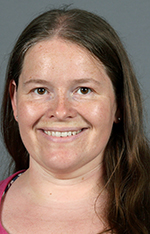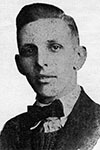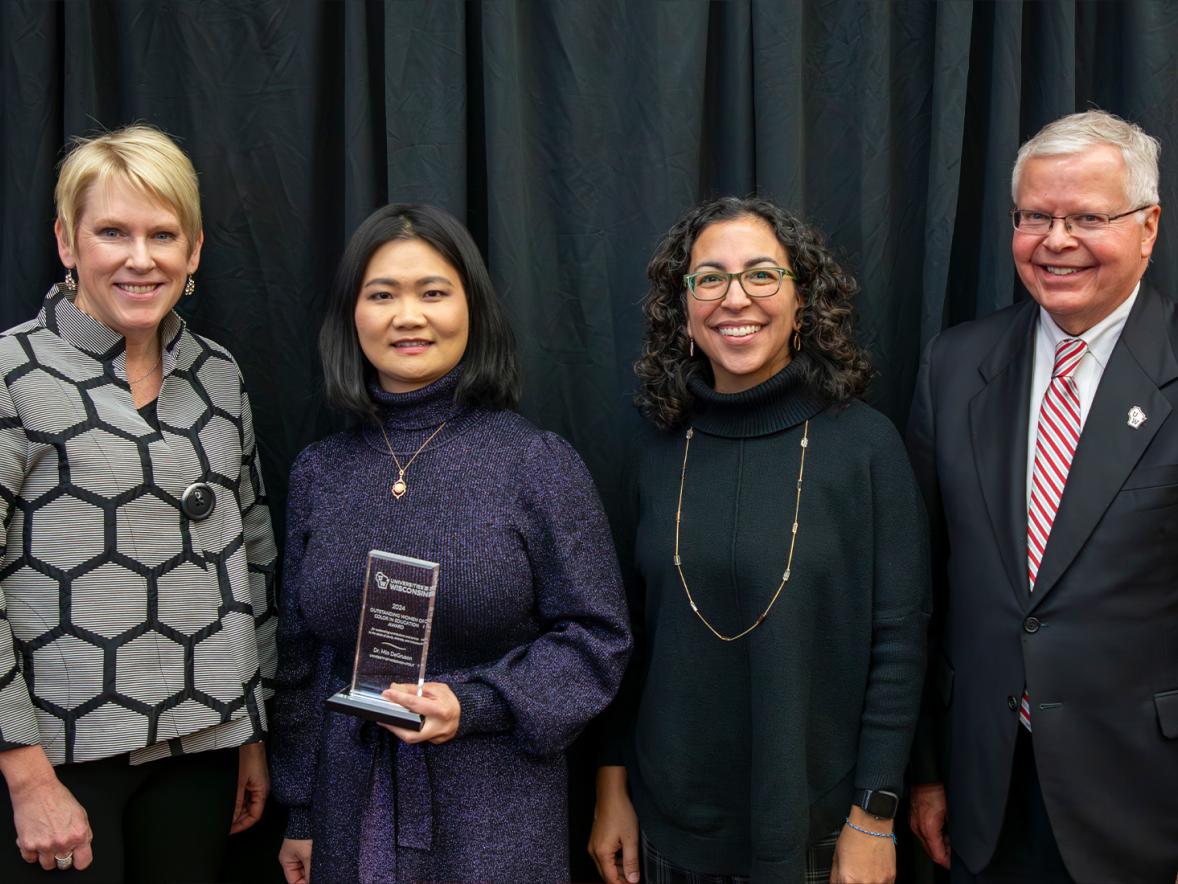If history repeats itself, University of Wisconsin-Stout archivist, Heather Stecklein, believes there is a potential for the university to address waves of the COVID-19 pandemic much like the H1N1 influenza pandemic of 1918-20.
 However, Stecklein, of the University Archives and Area Research Center, notes if history does repeat itself UW-Stout students will also make the best of the situation and prevail.
However, Stecklein, of the University Archives and Area Research Center, notes if history does repeat itself UW-Stout students will also make the best of the situation and prevail.
In 1918 UW-Stout, then known as the Stout Institute, had a student population of about 125. Female students lived in two dormitories on the north side of campus, along Lake Menomin. Male students lived in boarding houses and rental units in the city.
As the influenza pandemic, often called the Spanish flu, spread across the country in the fall of 1918, the campus took the threat seriously and canceled many events. A front-page story in the Stoutonia, the student newspaper noted: “The epidemic of Spanish Influenza has been the cause for clamping the lid very tightly over every function that brings people together. When conditions permit, and a reopening of the social calendar is warranted, there is plenty planned for Stout students.”
The Spanish flu afflicted an estimated 103,000 Wisconsinites and killed 8,459, either from the flu itself or from related pneumonia, according to an article on the website WisContext.
Stecklein found in her research that like today, with the COVID-19 pandemic, students were disappointed with the dramatic change to their social opportunities.
“But like Americans today, they acknowledged the importance of limiting their exposure to each other,” she said. “Students made attempts to mitigate these closures with humor. Stout events ebbed and flowed according to how active the outbreak was in the area.”
From 1918 to 1920 influenza struck the campus multiple times. The student newspaper and the Tower yearbook reported hospitalizations and deaths of community members. University students who had the illness were reported in the student newspaper, and many were sent to the school’s infirmary for observation and treatment.
The student newspaper served much like social media today. Stoutonia articles helped students keep track of each other’s locations and conditions, Stecklein noted.
Students also stepped up to help each other and the community. They would help with recovering patients and prepare food and supplies for the campus and community. “The Stoutonia demonstrated ongoing activism from the students,” Stecklein said.
Throughout the epidemic, students continued to publish jokes and poems in the Stoutonia. “They were college students, and they were making the best of the situation,” Stecklein said.
The Stoutonia also reported on alumni and community members who died of the H1N1 flu. One notable death was Ole Anshus, a former member of the band, who was engaged to a student. Anshus was a talented cornet player who contracted influenza in Detroit, Mich., while playing with noted composer John Philip Sousa’s war bonds campaign. Anshus is honored in Stout’s Hall of Heroes in the Memorial Student Center.
“Historically the big thing I found is since we don’t have a vaccine, we are facing the same reality as they did,” Stecklein said. “We may see this in multiple rounds. We may resume regular activities, and then we may have to stop them.”
University Archives is already planning how to preserve the COVID-19 pandemic within UW-Stout’s history and what items to keep for future historians and students to study. The university COVID-19 web page at www.uwstout.edu/coronavirus is being recorded each day using web-crawling software. Initial talks are underway to collect stories from around campus to help understand how today’s pandemic has affected people’s lives. To share a story contact archives@uwstout.edu.
“One hundred years later the UW-Stout community is addressing the social limitations and health concerns of a new epidemic with similar frustration, planning, humor and community activism,” Stecklein said. “Like our predecessors, we will get through this together, even as we acknowledge the importance of staying apart.”
###
Photos
Heather Stecklein
Ole Anshus






